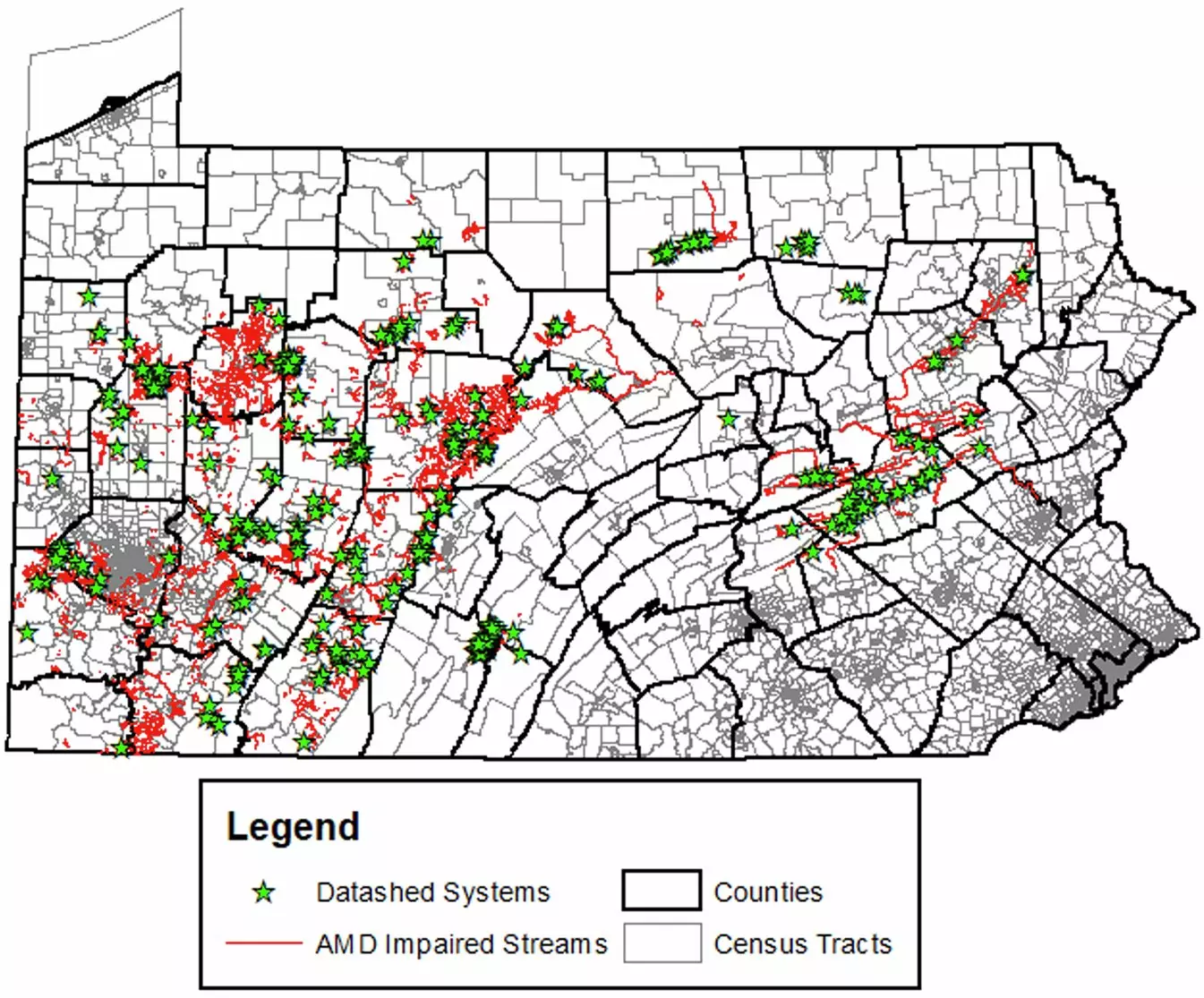Abandoned mine drainage (AMD) is a significant environmental issue that continues to plague regions with a history of coal mining, particularly in Pennsylvania. Recent research from the University of Pittsburgh underscores the effectiveness of existing treatment systems in improving water quality while highlighting the urgent need for additional funding and long-term strategies to address the extensive damage caused by AMD. Although the state has made strides in mitigating this issue, the scope of the problem remains vast, necessitating a multi-faceted response from policymakers.
The Scale of the Damage: Pathways to Progress
Over the past three decades, an impressive network of over 300 AMD treatment systems has been implemented throughout Pennsylvania, funded via state and federal resources. Professor Jeremy Weber notes that these systems have collectively safeguarded more than 1,000 miles of streams, yielding a cost-effective solution, averaging about $5,700 per kilometer annually. However, the ethical dilemma looms large as nearly 5,600 miles of water bodies still suffer from AMD-related impairments, accentuating the substantial gap between progress and necessity.
The sheer magnitude of impaired waterways raises critical questions about equitable access to clean water resources, particularly for low-income communities that bear the brunt of pollution. Data reveal that populations living in areas most affected by AMD experience household incomes approximately 30% lower than their unaffected counterparts, raising concerns of environmental justice. The intersection of economic distress and ecological degradation is palpable, as the most vulnerable communities become disproportionately affected by the dangers of AMD.
The Legislative Response: Is It Enough?
The passage of the Infrastructure and Investment and Jobs Act (IIJA) in 2021 introduced approximately $16 billion to address abandoned wells and mines nationwide. While this funding aims to facilitate remediation efforts, questions linger about its adequacy in confronting the broader challenges posed by AMD. This funding opens a vital pathway for cleaning up environmental legacies and provides a glimmer of hope for revitalizing local economies. However, the disbursement and utilization of these funds remain ambiguous, necessitating an informed yet cautious approach.
Weber’s research highlights the pressing need for targeted investments in the demographics most affected by AMD, creating a blueprint for effectively deploying the IIJA funds. With 2.4 million Pennsylvanians living in census tracts where streams are impaired by AMD, the call for community-centric solutions becomes paramount. Tackling this issue not only requires financial resources but also highlights the need for cooperative strategies that engage local actors and address their deeply rooted concerns.
Analysis of 265 AMD treatment systems reveals their significant impact on improving water quality, wherein the average outflow water shows remarkable improvement over raw inflow water. The pH levels of inflow water resemble those of tomato juice, highlighting the severity of local conditions, while the outflow approaches a more neutral level. Yet, the current systems are aging, and many communities remain unprotected. An estimated 6,500 miles of streams demand intervention, with a staggering $1.5 billion required over the next 25 years merely for AMD-related repairs, and an additional $3.9 billion necessary to manage other mine-related hazards like sinkholes and highwalls.
The funding gap highlights a systemic failure in addressing both long-term and emerging environmental challenges stemming from abandoned mining operations. The cost-effectiveness demonstrated by the AMD treatment systems emphasizes the critical nature of sustainable fiscal allocations and strategic planning.
In light of the impending challenges related to AMD and the transition towards renewable energy, it is crucial that both state and federal authorities prioritize a holistic framework to tackle environmental wear and economic revitalization. By paying attention to the socio-economic contexts of affected communities, stakeholders can ensure that initiatives not only address ecological restoration but also empower vulnerable populations.
The fight against AMD in Pennsylvania represents a confluence of environmental science, social justice, and economic opportunity. The research led by the University of Pittsburgh provides valuable insights into the challenges ahead, offering a pathway toward sustainable solutions that prioritize both ecological integrity and human well-being. As Pennsylvania navigates its recovery from its mining legacy, the call to action has never been more urgent, nor more vital for future generations.


Leave a Reply